
Recommended Reading List 5
Battles - The battles fought by the U.S. sailors, marines, airman and soldiers defined the long road to victory in the Pacific.
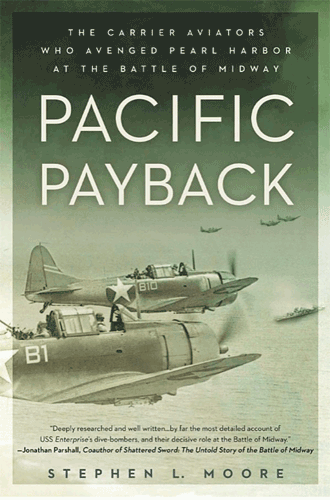
Pacific Payback: The Carrier Aviators Who Avenged Pearl Harbor at the Battle of Midway
Stephen L. Moore
But for the Dauntless dive-bomber crews of the USS Enterprise returning to their home base on Oahu, it was a morning from hell. Flying directly into the Japanese ambush at Pearl Harbor, they lost a third of their squadron and witnessed the heart of America’s Navy broken and smoldering on the oil-slicked waters below.
The next six months, from Pearl Harbor to the Battle of Midway—a dark time during which the Japanese scored victory after victory—this small band of aviators saw almost constant deployment, intense carrier combat, and fearsome casualties. Many were killed by enemy Zero fighters, antiaircraft fire, or deadly crash landings in the Pacific, while others were captured and spent years in POW camps. Yet the Enterprise’s Dauntless crews would be the first to strike an offensive blow against Japanese installations in the Marshall Islands, would be the first to sink a Japanese warship, and would shepherd the Doolittle Raiders’ bombing of Tokyo.
Not until Midway, though, would Dauntless crews get the chance to settle the score...and change the course of World War II. Drawing on dozens of new interviews and oral histories, author Stephen L. Moore brings to life inspiring stories of individual sacrifice and bravery—and the sweeping saga of one of America’s greatest triumphs.
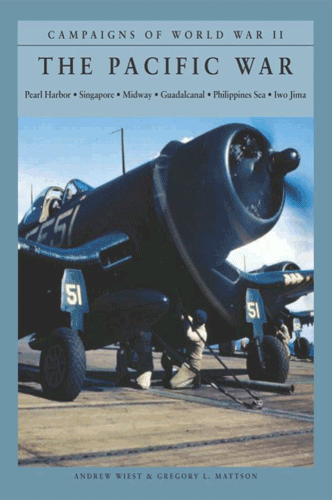
The Pacific War: Pearl Harbor, Singapore, Midway, Guadalcanal, Philippines Sea, Iwo Jima
Andrew Wiest & Gregory M. Mattson
From the Japanese attack on Pearl Harbor to the dropping of the atomic bombs on Nagasaki and Hiroshima, this superbly illustrated history explores the Pacific War in its entirety. The Pacific War takes an in-depth look at the whirlwind Japanese victories of 1941-42, when her armies and navies conquered Hong Kong, Burma, Malaya, the Philippines, and the Dutch East Indies, and analyzes how the Allies, specifically the US, organized a counterattack. Full-color maps following the movement of forces enhance the authoritative text, and artworks display the uniforms, armored fighting vehicles, aircraft, and ships used in the campaign; specifications tables accompany the vehicle, ship, and aircraft images. This expert, accessible, and colorful volume will appeal to military enthusiasts.
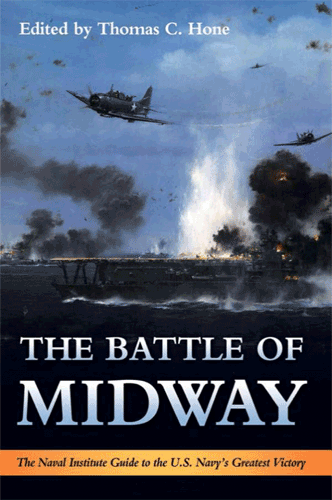
The Battle of Midway: The Naval Institute Guide to the U.S. Navy's Greatest Victory
Thomas C. Hone
The Battle of Midway, one of the great battles of the Pacific War, warrants close attention. This Naval Institute guide includes some of the most vibrant and informed accounts by individuals who fought on both sides of the June 1942 battle. The anthology pulls together memoirs, articles, excerpts from other Naval Institute Press books, and relevant government documents to help readers understand what happened and explain why the battle was so significant to the naval service. It also includes selections from several important Naval Institute oral histories.
From the enlisted man's perspective to the admiral's, for both Americans and Japanese, The Battle of Midway ensures that readers see the U.S. Navy's greatest victory as the participants experienced it.
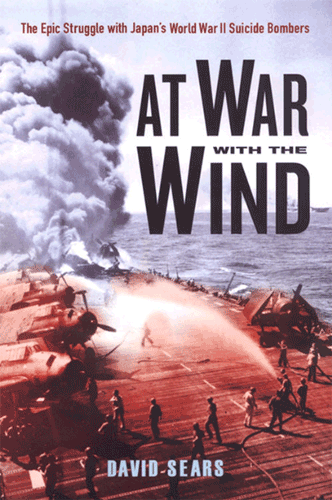
At War with the Wind: The Epic Struggle with Japan's World War II Suicide Bombers
David Sears
In the last days of World War II, a new and baffling weapon terrorized the United States Navy in the Pacific. To the American sailors, the self-sacrificing warriors of Japan were known as “suiciders,” but among the Japanese, they were named for the “divine wind” that once saved the home islands from invasion: kamikaze.
This is the harrowing story of a war within a war—a relentless series of furious and violent engagements pitting men determined to die against men determined to live. Its echoes resonate hauntingly at a time of global conflict, when suicide as a viable weapon remains a perplexing and terrifying reality.
Told from the perspective of the men who endured this horrifying tactic, At War with the Wind is the first book to recount in nail-biting detail what it was like to experience an attack by Japanese kamikazes. David Sears, acclaimed author of The Last Epic Naval Battle, draws on personal interviews and unprecedented research to create a stunningly vivid narrative of war.
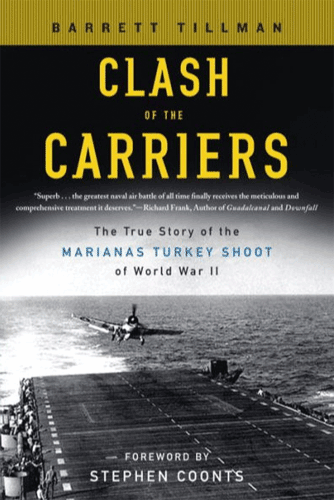
Clash of the Carriers: The True Story of the Marianas Turkey Shoot of World War II
Barrett Tillman
In June, 1944, American and Japanese carrier fleets made their way through the Philippine Sea, both hoping to take control of the vital Marianas Islands. When they met, they embarked upon a naval engagement that escalated into the most spectacular aircraft carrier battle in history. Here is the true account of the battle, told from both sides-by those who were there. Drawing upon numerous interviews as well as official sources, Clash of the Carriers is an unforgettable testimonial to the bravery of those who fought and those who died in a battle that will never be forgotten.
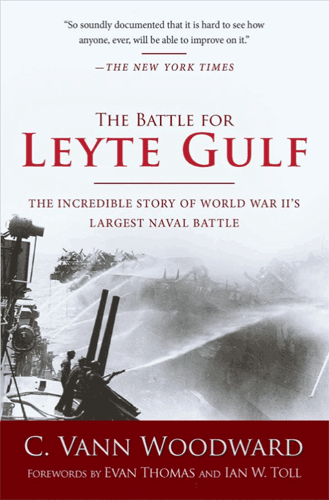
The Battle for Leyte Gulf
C. Vann Woodward
Pulitzer-Prize-winner and bestselling author C. Vann Woodward recreates the gripping account of the battle for Leyte Gulf—the greatest naval battle of World War II and the largest engagement ever fought on the high seas. For the Japanese, it represented their supreme effort; they committed to action virtually every operational fighting ship on the lists of the Imperial Navy, including two powerful new battleships of the Yamato class. It also ended in their greatest defeat—and a tremendous victory for the United States Navy. Features a new introduction by Evan Thomas, author of Sea of Thunder.
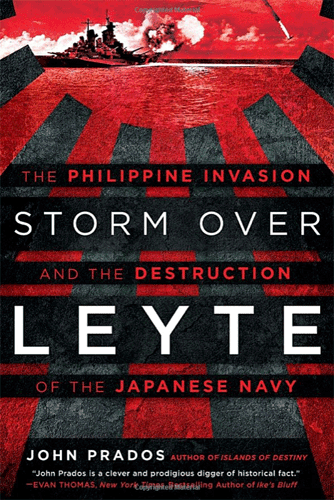
Storm Over Leyte: The Philippine Invasion and the Destruction of the Japanese Navy
John Prados
As Allied ships prepared for the invasion of the Philippine island of Leyte, every available warship, submarine and airplane was placed on alert while Japanese admiral Kurita Takeo stalked Admiral William F. Halsey’s unwitting American armada. It was the beginning of the epic Battle of Leyte Gulf—the greatest naval battle in history.
In Storm Over Leyte, acclaimed historian John Prados gives readers an unprecedented look at both sides of this titanic naval clash, demonstrating that, despite the Americans’ overwhelming superiority in firepower and supplies, the Japanese achieved their goal, inflicting grave damage on U.S. forces. And for the first time, readers will have access to the naval intelligence reports that influenced key strategic decisions on both sides.
Drawing upon a wealth of untapped sources—U.S. and Japanese military records, diaries, declassified intelligence reports and postwar interrogation transcripts—Prados offers up a masterful narrative of naval conflict on an epic scale.
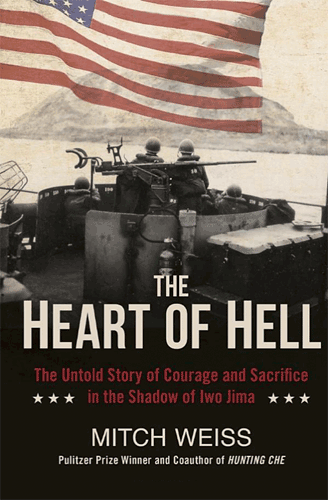
The Heart of Hell: The Untold Story of Courage and Sacrifice in the Shadow of Iwo Jima
Mitch Weiss
On February 17, Landing Craft Infantry 449 was among a dozen gunboats helping to prepare the area for their invasion two days later. U.S. military leaders thought they had weakened Japanese forces in the area so they were not expecting any action…
From the towering slopes of Mount Suribachi, Japanese forces opened fire, forcing the U.S. commanders to recalculate battlefield plans. They shelled and bombed the newly discovered enemy positions. It was a move that saved countless lives two days later, when tens of thousands of Marines stormed the beach.
The Heart of Hell is the untold story of the crew of Landing Craft Infantry 449. Based on 130 exclusive interviews with sailors who survived the battle, the families of the men killed in the fight, and more than 1,500 letters the sailors mailed to loved ones during their long months at sea, this is a story of duty, brotherhood, love, and courage.
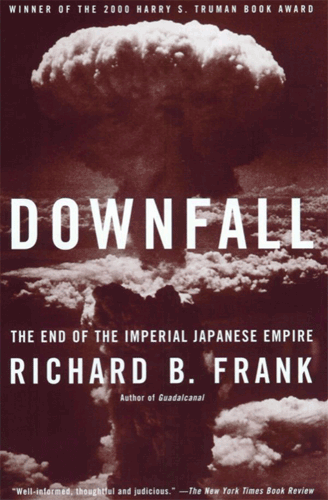
Downfall: The End of the Imperial Japanese Empire
Richard B. Frank
In a riveting narrative that includes information from newly declassified documents, acclaimed historian Richard B. Frank gives a scrupulously detailed explanation of the critical months leading up to the dropping of the atomic bomb. Frank explains how American leaders learned in the summer of 1945 that their alternate strategy to end the war by invasion had been shattered by the massive Japanese buildup on Kyushu, and that intercepted diplomatic documents also revealed the dismal prospects of negotiation. Here also, for the first time, is a comprehensive account of how Japan's leaders were willing to risk complete annihilation to preserve the nation's existing order. Frank's comprehensive account demolishes long-standing myths with the stark realities of this great historical controversy.
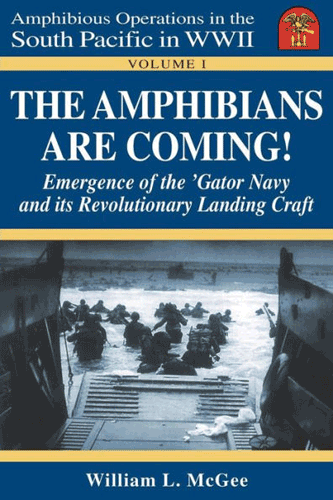
The Amphibians Are Coming! Emergence of the 'Gator Navy and its Revolutionary Landing Craft
William L. McGee
THE AMPHIBIANS ARE COMING! -- A biographical history of the revolutionary World War II landing craft and the unsung heroes who manned them.
Provides a brief history of amphibious warfare, from the Revolutionary War to the 1942 Guadalcanal and North Africa campaigns.
Puts the reader aboard the revolutionary landing craft designed and built to speed assault troops directly to the beach.
Profiles the famed "Green Dragons," the high-speed destroyer transports that filled a pressing Marine Corps need for ship-to-shore delivery prior to the availability of the new landing craft.
Focuses on the "Earlybird" Flotilla Five LCTs, LSTs and LCIs and their crews, from landing craft design and construction, to amphibious training and crew and flotilla formations, and to on-the-job warfare training in the Southern Solomons -- all in preparation for their first invasion of enemy-held territory, Operation TOENAILS.
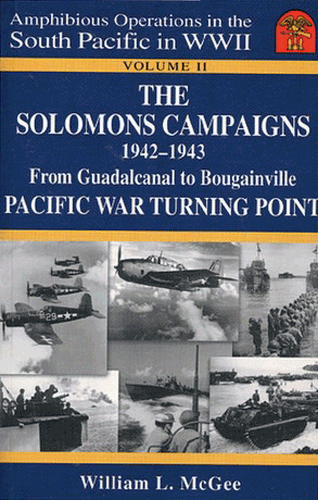
The Solomons Campaigns, 1942-1943: From Guadalcanal to Bougainville, Pacific War Turning Point
William L. McGee
Pacific War - On 7 August 1942, eight months to the day after the Japanese attack on Pearl Harbor, the U.S. 1st Marine Division landed on Tulagi and Guadalcanal in the Solomon Islands. This was the beginning of the brutal six month Battle for Guadalcanal. Under one cover, military historian William L. McGee details all the campaigns fought in the Solomon Islands - from Guadalcanal to Bougainville - and sums up the valuable lessons learned.
"As a Marine who landed on Guadalcanal on 7 August 1942, Bill McGee's THE SOLOMONS CAMPAIGNS, 1942-1943 is the most comprehensive book I've read on the subject. It covers all the campaigns -- Southern, Central and Northern -- and brings back memories of those very dark days. Semper Fi."
- William J. Carroll, President, Guadalcanal Campaign Veterans
"Enough gripping drama, heroism, and heartbreak in McGee's almost encyclopedic THE SOLOMONS CAMPAIGNS to supply Hollywood with material for a century."
- Marine Corps League Magazine
"The result is a masterpiece."
- Leatherneck, Magazine of the Marines
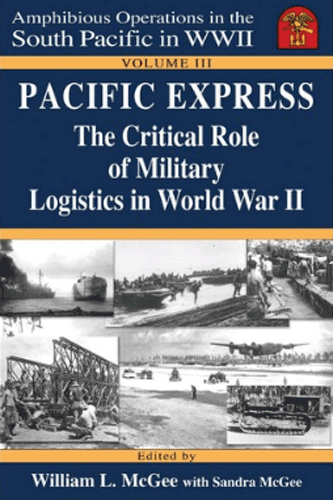
Pacific Express: The Critical Role of Military Logistics in World War II: Volume 3
William L. McGee
Consider this: In World War II, 16.1 million men and women served in the U.S. Armed Forces. For every individual who served in combat, there were ten supportive personnel, both overseas and on the home front. Victory may be won or lost in battle, but all military history shows that adequate logistics support is essential to the winning of the battles.
The author profiles the many major components that made up the "Pacific express" in WWII including:
• U.S. Navy Seabees and U.S. Marine Corps Engineers who built the Advance Bases.
• U.S. Navy crews who manned the amphibious force and Fleet s floating mobile Service Squadrons throughout the vast reaches of the Pacific.
• U.S. Merchant Marine and U.S. Naval Armed Guard who manned and defended the thousands of WSA cargo ships, transports, and tankers to "deliver the goods."
• U.S. Coast Guardsmen who manned hundreds of U.S. Army and Navy long-haul vessels and thousands of battle-loaded amphibious landing ships and craft.
111 b&w photos, 7 maps, 21 figures, tables & charts, plus appendix, notes, bibliography, and index.

